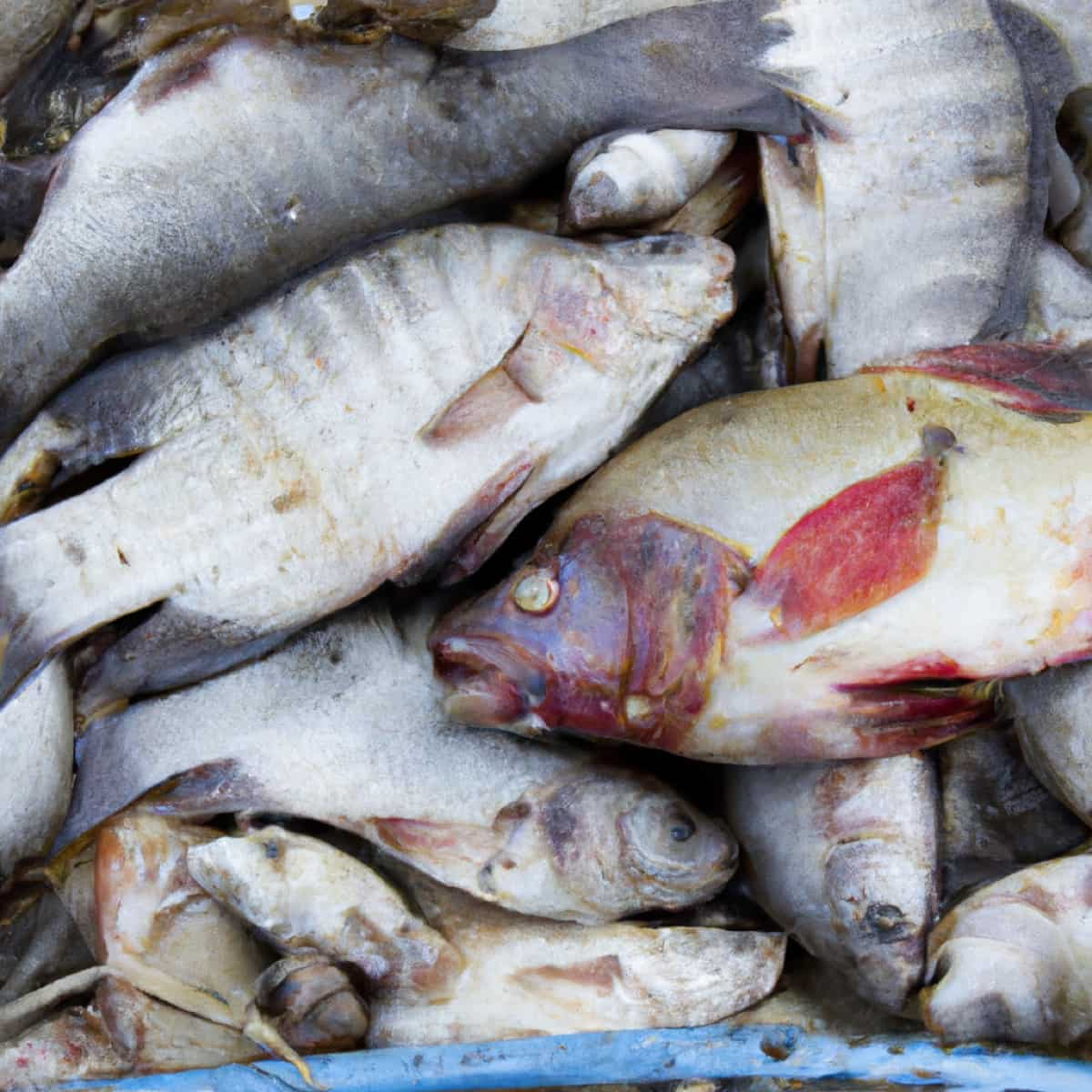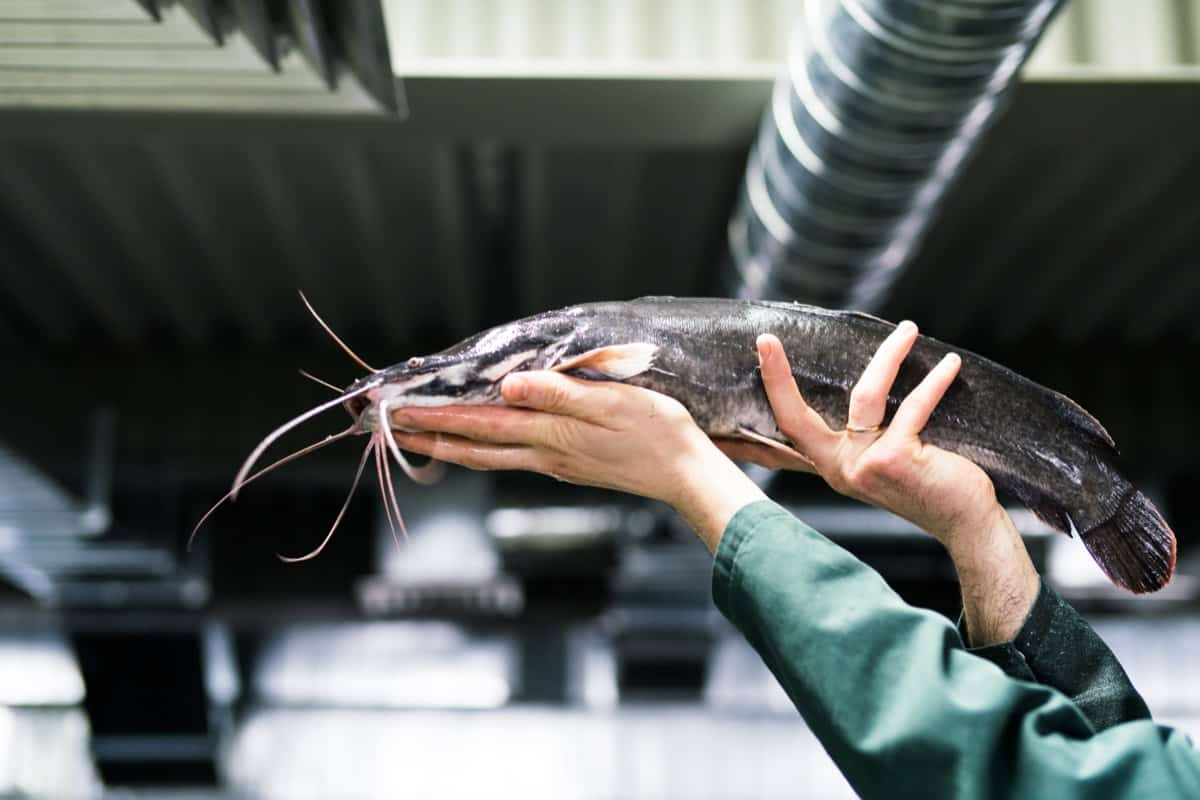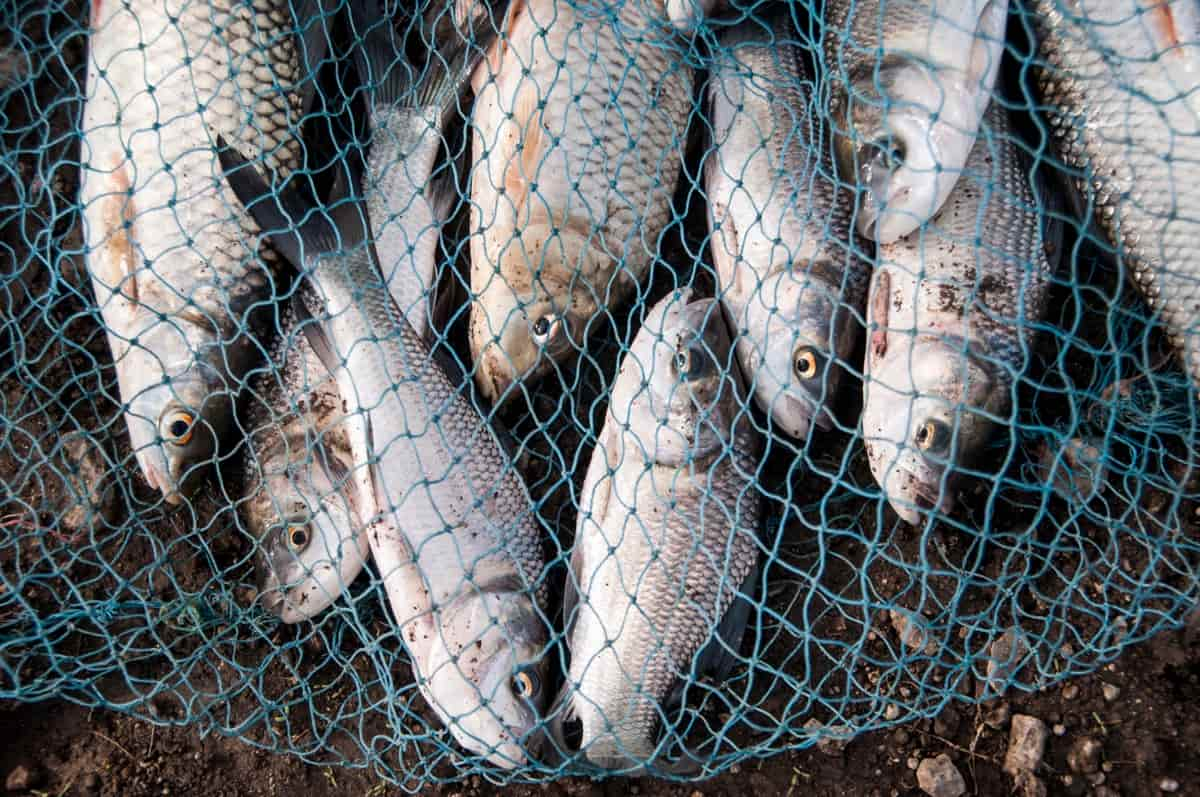Commercial fish production can be highly profitable, but fish health issues can cause significant financial losses for fish farmers. Numerous diseases can afflict fish, and identifying and addressing them quickly is critical for maintaining the fish population’s health and ensuring a successful harvest. Below learn about common fish diseases and their control, prevention, and control of fish diseases, and causes for fish diseases.

Top 10 Fish Diseases
Ichthyophthirius multifiliis (Ich)
- Symptoms: White spots on the fish’s body, fins clamped to the body, scratching against objects in the tank.
- Causes: Ich is caused by a parasite that attaches to the fish’s skin and gills. It is highly contagious and can be introduced to a tank through infected fish or contaminated equipment.
- Prevention: Quarantine new fish before introducing them to the main tank. Maintain good water quality and hygiene in the tank.
- Control: Treat with medication, such as copper sulfate or formalin, as directed by a veterinarian or fish health expert.
Aeromonas salmonicida (Furunculosis)
- Symptoms: Sores or ulcers on the fish’s body, fins clamped to the body, lethargy, loss of appetite.
- Causes: Furunculosis is caused by a bacterium that thrives in poor water quality, overcrowding, and stress.
- Prevention: Maintain good water quality, avoid overcrowding, and reduce stress through proper handling and feeding practices.
- Control: Treat with antibiotics, such as oxytetracycline or florfenicol, as directed by a veterinarian or fish health expert.
Saprolegnia (Water Mold)
- Symptoms: White, fuzzy growths on the fish’s body, fins, and gills.
- Causes: Saprolegnia is caused by a mold that thrives in poor water quality, overcrowding, and stress.
- Prevention: Maintain good water quality, avoid overcrowding, and reduce stress through proper handling and feeding practices.
- Control: Treat with antifungal medication, such as malachite green or formalin, as directed by a veterinarian or fish health expert.
Flexibacter columnaris (Columnaris)
- Symptoms: White or gray patches on the fish’s body, frayed fins, lethargy, and loss of appetite.
- Causes: Columnaris are caused by a bacterium that thrives in poor water quality, overcrowding, and stress.
- Prevention: Maintain good water quality, avoid overcrowding, and reduce stress through proper handling and feeding practices.
- Control: Treat with antibiotics, such as oxytetracycline or florfenicol, as directed by a veterinarian or fish health expert.
Koi Herpesvirus (KHV)
- Symptoms: Lethargy, loss of appetite, white or pink patches on the fish’s body, gills, or fins.
- Causes: KHV is caused by a highly contagious herpesvirus that can be introduced to a tank through infected fish or contaminated equipment.
- Prevention: Quarantine new fish before introducing them to the main tank. Maintain good water quality and hygiene in the tank.
- Control: There is no cure for KHV, and infected fish should be euthanized to prevent the spread of the virus. Disinfect equipment and quarantine new fish before introducing them to the main tank to prevent the introduction of the virus.
In case you missed it: A Step-By-Step Guide to Building a Fish Pond in Your Backyard: A First Step to Fish Farming

Gyrodactylus (Skin Flukes)
- Symptoms: Scratching against objects in the tank, skin irritation, flashing, inflammation.
- Causes: Skin flukes are caused by a parasitic flatworm that attaches to the skin and fins of fish. They can be introduced to a tank through infected fish or contaminated equipment.
- Prevention: Quarantine new fish before introducing them to the main tank. Maintain good water quality and hygiene in the tank.
- Control: Treat with medication, such as praziquantel or formalin, as directed by a veterinarian or fish health expert.
Edwardsiella tarda (Edwardsiellosis)
- Symptoms: Lethargy, loss of appetite, bloated abdomen, skin ulcers, and hemorrhages.
- Causes: Edwardsiellosis is caused by a bacterium that thrives in poor water quality, overcrowding, and stress.
- Prevention: Maintain good water quality, avoid overcrowding, and reduce stress through proper handling and feeding practices.
- Control: Treat with antibiotics, such as oxytetracycline or florfenicol, as directed by a veterinarian or fish health expert.
Mycobacterium marinum (Fish Tuberculosis)
- Symptoms: Lethargy, weight loss, loss of appetite, pale coloration, ulcers, and nodules.
- Causes: Fish tuberculosis is caused by a bacterium that thrives in poor water quality, overcrowding, and stress.
- Prevention: Maintain good water quality, avoid overcrowding, and reduce stress through proper handling and feeding practices.
- Control: Unfortunately, there is no cure for fish tuberculosis, and infected fish should be euthanized to prevent the spread of the disease. Disinfect equipment and quarantine new fish before introducing them to the main tank to prevent the introduction of the bacterium.
Argulus spp. (Fish Lice)
- Symptoms: Scratching against objects in the tank, skin irritation, flashing, inflammation.
- Causes: Fish lice are caused by a parasitic crustacean that attaches to the skin and fins of fish. They can be introduced to a tank through infected fish or contaminated equipment.
- Prevention: Quarantine new fish before introducing them to the main tank. Maintain good water quality and hygiene in the tank.
- Control: Treat with medication, such as organophosphates or pyrethroids, as directed by a veterinarian or fish health expert.
Flavobacterium spp. (Mouth Rot)
- Symptoms: Ulcers on the mouth and lips, loss of appetite, lethargy, frayed fins.
- Causes: Mouth rot is caused by a bacterium that thrives in poor water quality, overcrowding, and stress.
- Prevention: Maintain good water quality, avoid overcrowding, and reduce stress through proper handling and feeding practices.
- Control: Treat with antibiotics, such as erythromycin or oxytetracycline, as directed by a veterinarian or fish health expert.
Frequently Asked Questions about Fish Diseases
How Can We Prevent and Control Fish Diseases?
Firstly, maintaining good water quality is key to preventing fish diseases. Fish thrive in a clean and well-maintained environment, so keeping the aquarium or pond clean and well-filtered is essential. Regular water changes, removing debris, and regularly testing water quality are essential to maintain optimal water conditions.
Secondly, maintaining good hygiene is important in preventing and controlling fish diseases. This includes properly cleaning the aquarium or pond equipment, quarantining new fish before introducing them to an established tank, and avoiding overfeeding, which can lead to excess waste and pollution. Additionally, keeping stress levels low in fish by providing a suitable environment and avoiding overcrowding can also help prevent the development and spread of diseases.
In case you missed it: How to Start a Fish Hatchery Business: A Profital Fish Breeding Idea for Aqua Farmers

Overall, by maintaining good water quality, practicing good hygiene, and keeping stress levels low in fish, you can significantly reduce the risk of fish diseases and promote the health and longevity of your fish.
Conclusion
In conclusion, fish diseases can significantly impact commercial production and lead to significant financial losses. Understanding the symptoms, causes, and prevention methods for the top fish diseases is crucial for maintaining a healthy and profitable fish population.
- Feed Your Flock for Less: Top 10 Tips to Save on Chicken Feed
- Ultimate Guide to Ossabaw Island Hog: Breeding, Raising, Diet, and Care
- Hatching Answers: The Top 10 Reasons Your Chickens Aren’t Laying Eggs
- Eggs and Economics: Breaking Down the Cost of Raising Backyard Chickens
- Defend Your Greens: Proven Methods to Keep Iguanas Out of Your Garden
- Ultimate Guide to Cinnamon Queen Chicken: A Comprehensive Guide for Beginners
- Ultimate Guide to California Tan Chicken: Breeding, Raising, Diet, Egg-Production and Care
- Ultimate Guide to Marsh Daisy Chicken: Breeding, Raising, Diet, and Care
- 10 Types of Chicken Farming Businesses You Can Start for Profits